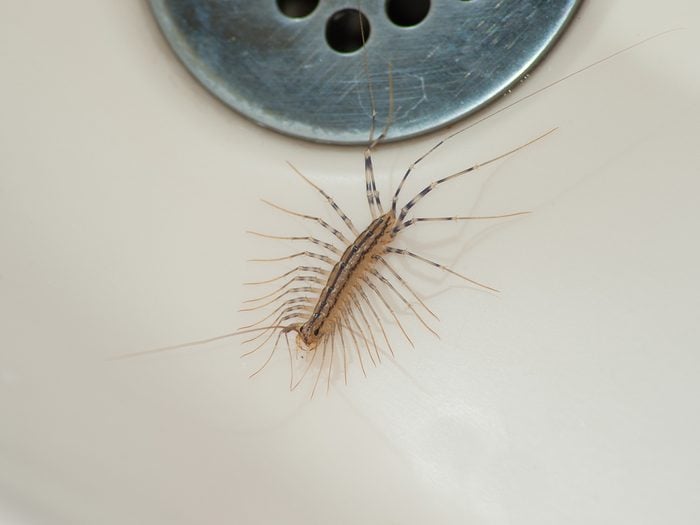
Centipedes
Of all the house bugs, here’s nothing more terrifying than watching a house centipede shoot across your floor and under your couch. House centipedes typically have 30 legs and can travel 1.3 feet-per-second, which explains why catching one of these house bugs is nearly impossible.
If you want to get rid of house centipedes, get rid of the food they source on. You can do this by making sure there isn’t extra moisture in your walls by using a dehumidifier or installing a fan in the bathroom. Seal off any cracks entering the house so pests don’t have places to lay eggs, and make sure to clear your house of any debris that is causing unnecessary moisture to leak into your walls.
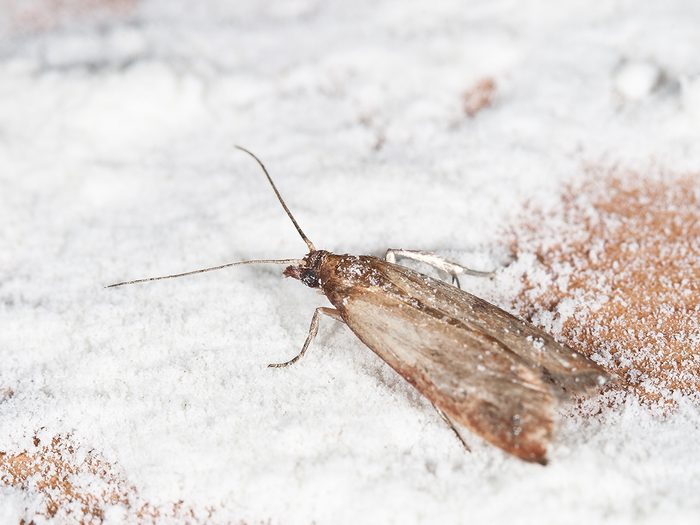
Pantry Moths
Meal moths, often known as pantry moths, love to get into dry food such as flour, pasta, pet food, cereals and beans. The really gross part? That’s where these house bugs are laying their eggs, so the larvae have a ready-made meal as soon as they’re hatched. Ick. Keep everything tightly sealed, and regularly go through your pantry to toss expired items. Tackle adult moths with moth pheromone traps, not mothballs, which have been linked with non-Hodgkin lymphoma.
Eliminate more potential hazards by following our healthy home checklist.
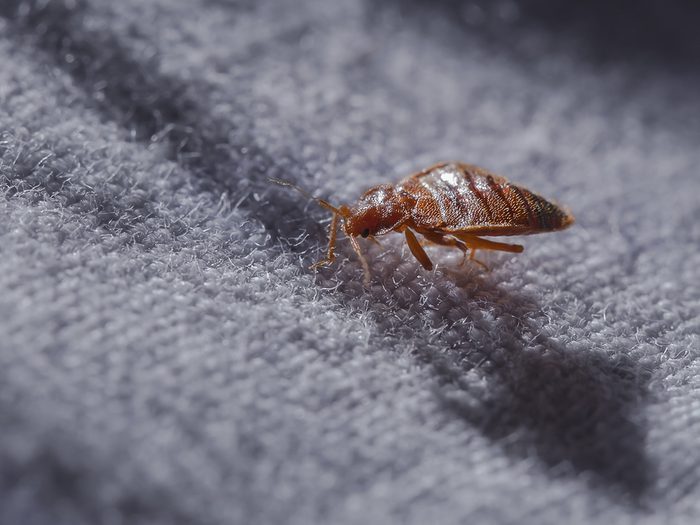
Bed Bugs
Bed bugs don’t like being jostled, so they avoid hanging out in your hair or clothes, but they do like to stay close to their food source, namely you. The mattress is the first place you should inspect. These insidious house bugs love to hang out in cracks and crevices. They can fit into any gap the thickness of a business card. One of their favourite spots is the piping along the edge of a mattress. Look for the bugs themselves, their dark droppings, your dried blood, eggs and gold-coloured shells that have been left behind after molting.
Perform a quick inspection of the upper piping every time you change your sheets. Make a more thorough examination by folding the piping over and closely inspecting both sides all the way around, top and bottom. Do this a couple times a year or every time you flip or rotate your mattress.
Here are 13 cleaning hacks that can help take the hassle out of housekeeping.
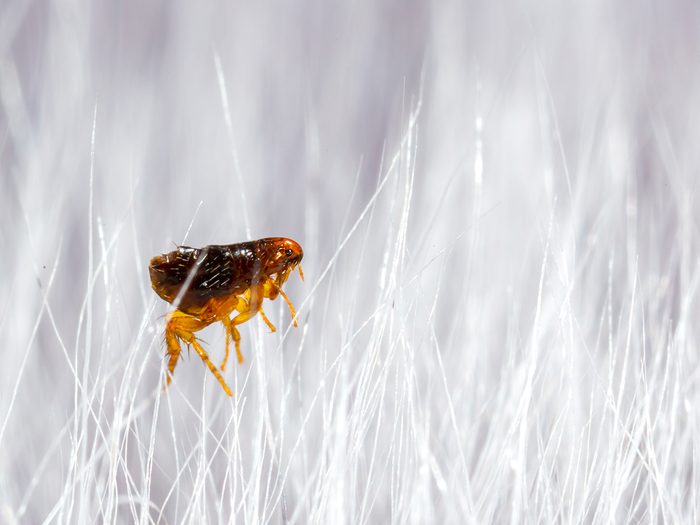
Fleas
The most effective way to kill fleas directly with a home-safe flea spray. When fleas invade, they tend to spread all around the house, but also congregate in certain areas. Use the spray in places where you see fleas. This can be the back of your sofa, the edge of your carpet, pet bedding and so on. By spraying around your house, you can remove many active fleas immediately, so this is an effective first step. However, there are usually dormant fleas and eggs you also need to remove.
The next step in getting rid of fleas is cleaning. As a general rule, clean everything that has fabric. Thoroughly vacuum your furniture, carpet, drapes, pillows—anything made of fabric. Carpet is especially important, leave no inch un-vacuumed. Take all of your bed linens and wash them, along with any other laundry and towels. If the infestation is bad, throw away pet bedding. If it’s a small outbreak of fleas, clean the pet bedding thoroughly. If you notice more fleas, spray the area with the flea spray.
Find out why you should never let your cat sleep in your bed.
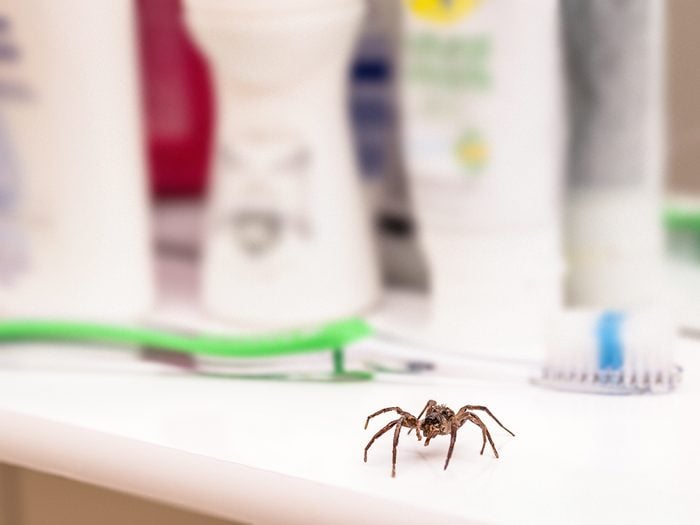
Spiders
Bothered by spiders setting up shop inside your house? Spiders often come indoors seeking warmth and food. We all know they prey on other insects, which can be a benefit, but do you really want to share your home with them? You can get rid of spiders with a little patience and the right tactics—but act quickly before they have a chance to lay their eggs!
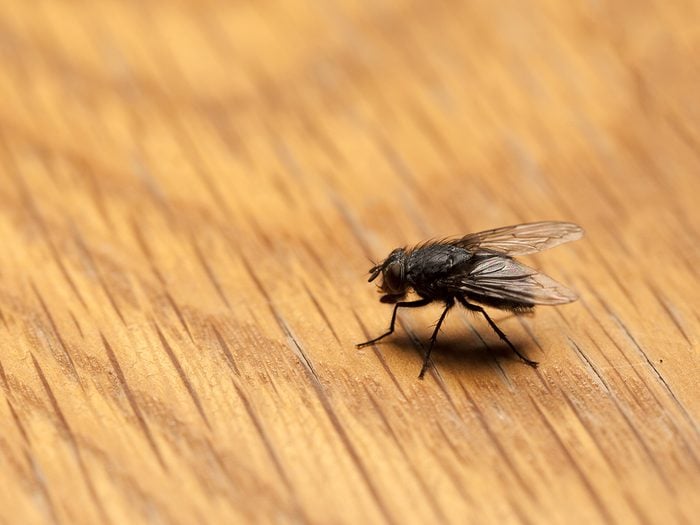
Flies
For flies stuck inside the house, your best option is to lure them into inescapable fly traps. A DIY fly trap is very easy to make. Start with an empty two-litre soda bottle and cut the top third cleanly off with scissors. Then turn the top third upside down and put it over the open bottle, like a funnel and secure it with tape or staples. Next, fill the bottom of the bottle with about half an inch of a melted sugar water mixture or another type of sweet sticky liquid. When filling the bottle try and drip the sticky liquid down the edges of the funnel so that when the flies come towards the funnel, they will stick right from the start. This makes it easy for flies to crawl inside, but very difficult for them to ever leave.
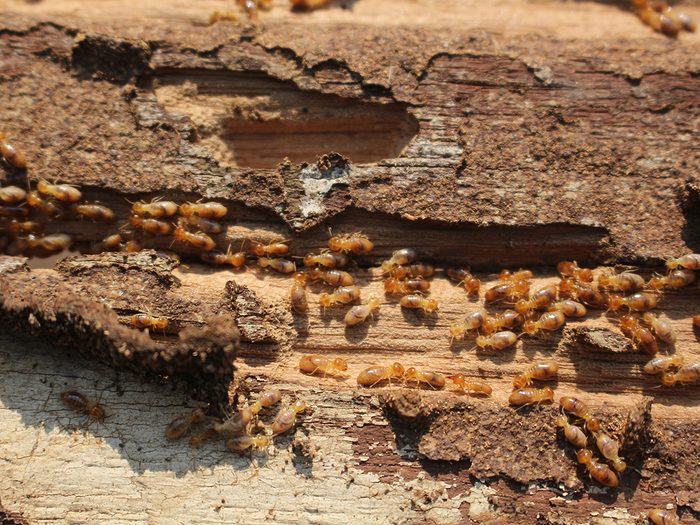
Termites
The first step in getting rid of these incredibly damaging house bugs is to find the termite nest. Professional pest services prove very helpful here, because they have imaging technology and other tools to help locate where the most termites live. Once the nest is located, plant bait traps designed to poison the termite queen and the workers. You must place these traps where the termites are congregated for the best effect.
It’s also important to seal any easy access into your home. Check your basement/crawlspace and attic insulation. Look for gaps, cracks and other signs that termites may be able to find their way inside. Make a close inspection of your outer foundation and look for any cracks or possible points of entry. Seal all gaps around cables, wires, and pipes entering your home.
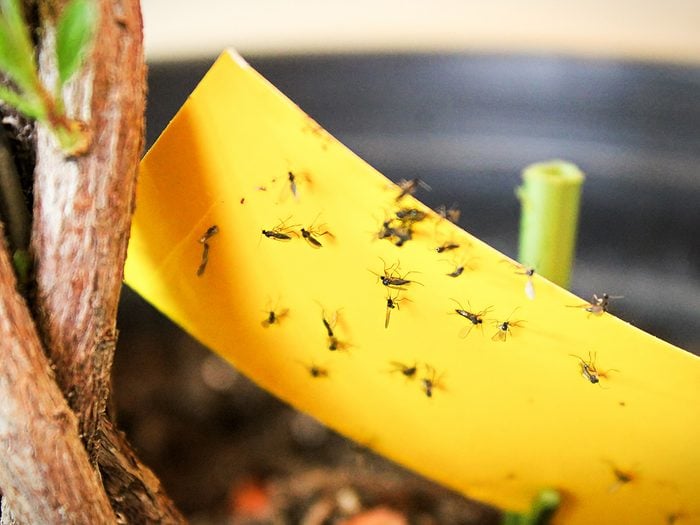
Gnats
Gnats can prove particularly annoying once they get inside your house—especially since it can be difficult to notice them until an infestation is underway. Gnats have short lifespans, so if you don’t give them a place to reproduce, eventually they won’t be a problem anymore. While gnats don’t necessarily eat rotting fruit or vegetables, they may still linger around overwatered houseplants—and trash. To discourage them, keep your garbage cans tightly closed, and bag all trash thoroughly so no gnats or fruit flies will find a way to them.
Find out how to get rid of fungus gnats in your houseplants.
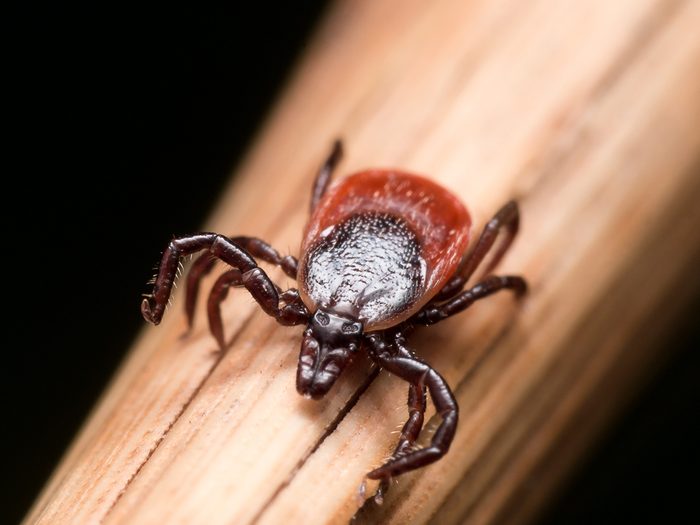
Ticks
Ticks are becoming a major threat to our health. These pests are dangerous to humans and pets, as they can carry diseases. Deer ticks are found in wooded areas, particularly where humidity levels are high. They enjoy cooler places and longer grasses compared to sunny, manicured lawns, which is why you won’t likely find ticks crawling around in the middle of your yard. The best way to avoid ticks around your lawn during the summertime is to add an edge around the yard. This edging could be made up of gravel pathways, mulches, decking, stone, tile or other hardscapes.
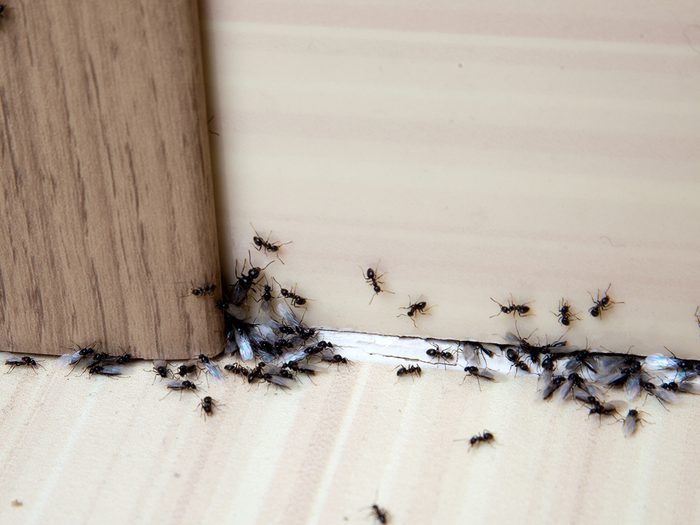
Ants
When you see an ant, your first impulse is probably to step on it. Don’t. You’ll kill it, but for every ant you see, there may be hundreds more hiding in the house. The ones you see are scout ants, foraging for food to take back to the colony. Find out how to get rid of ants for good.
Now that you know how to deal with these common house bugs, find out 13 things exterminators want you to know.